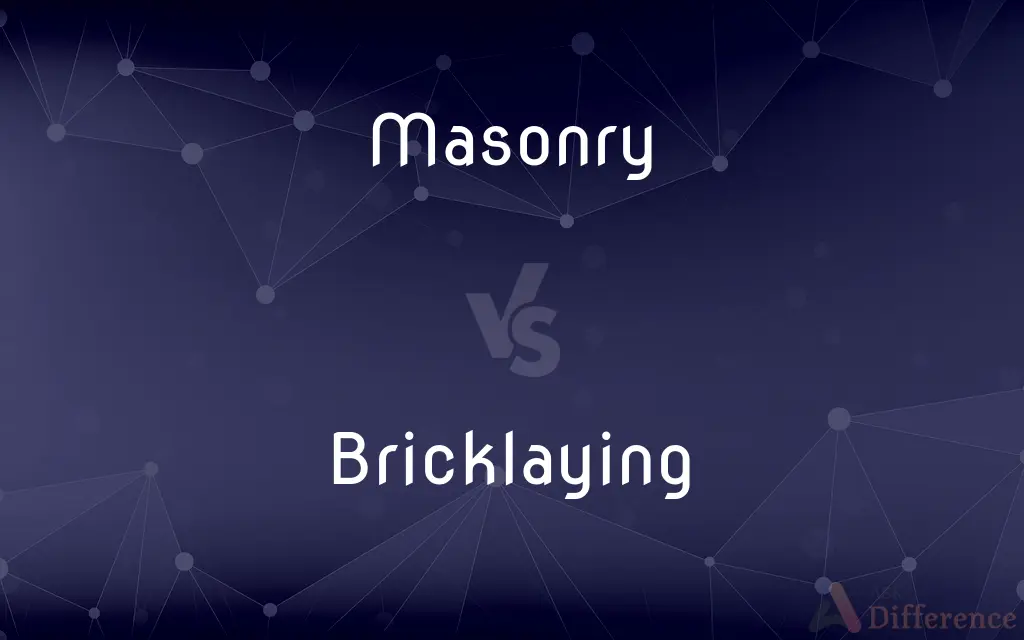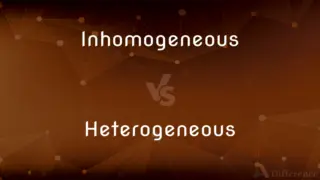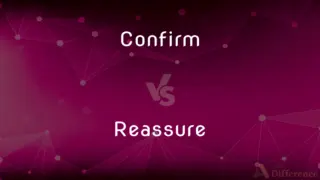Masonry vs. Bricklaying — What's the Difference?
By Tayyaba Rehman & Urooj Arif — Updated on April 18, 2024
Masonry involves building structures from individual units of various materials, while bricklaying specifically refers to constructing with bricks and mortar.

Difference Between Masonry and Bricklaying
Table of Contents
ADVERTISEMENT
Key Differences
Masonry is a broad term that encompasses the construction of structures using individual pieces of various materials such as stone, brick, concrete blocks, and more. Whereas, bricklaying is a specific type of masonry focused solely on the use of bricks and mortar to create walls and other structures.
Masons are skilled in a variety of building techniques and might work with different materials depending on the project requirements. On the other hand, bricklayers specialize in techniques related to brick and mortar, including spreading mortar, laying bricks in a systematic manner, and ensuring the alignment and integrity of the structure.
The tools used in masonry vary widely depending on the material and scope of the project, including trowels, chisels, and levels for stone, brick, or blocks. Whereas, bricklaying primarily utilizes tools specific to handling bricks such as brick tongs, jointers, and masonry saws.
Training for masonry can be more comprehensive, often including education on various materials and construction methods. On the other hand, training for bricklaying is typically more focused, emphasizing mastery over brick-specific skills and techniques.
Projects involving masonry can be diverse, ranging from constructing building facades to erecting stone monuments. Conversely, bricklaying projects usually involve the construction of brick walls, fireplaces, and similar structures.
ADVERTISEMENT
Comparison Chart
Definition
Building with various materials
Building specifically with bricks
Materials Used
Stone, bricks, blocks, etc.
Bricks only
Specialization
Broad range of skills
Specialized skills in brickwork
Tools Used
Variety depending on material
Brick-specific tools
Typical Projects
Diverse structures
Primarily walls and fireplaces
Compare with Definitions
Masonry
A finished structure made from the laying of units bound by mortar.
The old masonry of the fort has stood the test of time.
Bricklaying
Skills and techniques specific to working with bricks.
Proper bricklaying involves precise mortar mixing and joint spacing.
Masonry
The trade or occupation of a mason.
She pursued a career in masonry after learning the craft from her father.
Bricklaying
A method of construction using brick and mortar.
The new addition to the school was made using traditional bricklaying techniques.
Masonry
Materials used for masonry construction.
The building materials included high-quality masonry sourced locally.
Bricklaying
The craft of building with bricks and mortar.
Bricklaying requires steady hands and a keen eye for detail.
Masonry
The art of building structures from individual units of various materials.
The masonry work on the cathedral involved intricate designs with both brick and stone.
Bricklaying
The profession of a bricklayer.
After years in the field, he taught others the art of bricklaying.
Masonry
The craftsmanship involved in constructing masonry structures.
His masonry skills were evident in the beautifully constructed archway.
Bricklaying
The act of laying bricks to form walls or other structures.
He spent the summer learning bricklaying on a construction site.
Masonry
Masonry is the building of structures from individual units, which are often laid in and bound together by mortar; the term masonry can also refer to the units themselves. The common materials of masonry construction are brick, building stone such as marble, granite, and limestone, cast stone, concrete block, glass block, and adobe.
Bricklaying
One who builds with bricks.
Masonry
Stonework
Cracks in the finished masonry
Masonry nails
Bricklaying
The act of building a wall by laying bricks, usually with cement between the surfaces of the bricks.
Masonry
Freemasonry
The ‘degrees’ found in Masonry are symbolic practices
Bricklaying
The art of building with bricks, or of uniting them by cement or mortar into various forms; the act or occupation of laying bricks.
Masonry
The trade of a mason.
Bricklaying
The craft of laying bricks
Masonry
Work done by a mason.
Masonry
Stonework or brickwork.
Masonry
Masonry Freemasonry.
Masonry
The art or occupation of a mason.
He studied masonry for five years.
Masonry
The work or performance of a mason
The masonry was exquisite.
Masonry
That which is built by a mason; anything constructed of the materials used by masons, such as stone, brick, tiles, or the like. Dry masonry is applied to structures made without mortar.
The masonry was cracked.
Masonry
The craft, institution, or mysteries of Freemasons; Freemasonry.
Masonry
The art or occupation of a mason.
Masonry
The work or performance of a mason; as, good or bad masonry; skillful masonry.
Masonry
That which is built by a mason; anything constructed of the materials used by masons, such as stone, brick, tiles, or the like. Dry masonry is applied to structures made without mortar.
Masonry
The craft, institution, or mysteries of Freemasons; freemasonry.
Masonry
Structure built of stone or brick by a mason
Masonry
Freemasons collectively
Masonry
The craft of a mason
Common Curiosities
Can masonry include work with materials other than bricks?
Yes, masonry can include stone, concrete blocks, and other materials.
Are the tools for masonry and bricklaying the same?
Some tools overlap, but bricklaying uses some specialized tools like brick tongs and jointers.
Can a bricklayer work on masonry projects?
Yes, a bricklayer can work on masonry projects that involve brickwork.
Which is more versatile, masonry or bricklaying?
Masonry is more versatile, involving multiple materials and construction techniques.
What type of structures are common to bricklaying?
Common structures include walls, fireplaces, and chimneys.
Is it easier to learn bricklaying than masonry?
Bricklaying can be simpler to learn as it focuses on specific techniques and materials.
What is the main difference between masonry and bricklaying?
Masonry refers to constructing with various materials, while bricklaying specifically involves bricks.
Is bricklaying considered a form of masonry?
Yes, bricklaying is a specialized form of masonry.
Which requires more diverse skills, masonry or bricklaying?
Masonry requires a broader range of skills to handle various materials.
What is the historical significance of masonry compared to bricklaying?
Masonry has a rich history involving various ancient structures across cultures, while bricklaying also has a significant historical footprint, especially in industrial-age constructions.
What kind of maintenance does masonry require compared to bricklaying?
Both require maintenance, but the type can vary based on the materials used in the masonry.
How does the durability of masonry compare to that of bricklaying?
Durability largely depends on the materials used and the quality of construction, though both are generally durable.
What are the aesthetic differences between masonry and bricklaying?
Masonry offers more aesthetic variety due to the different materials that can be used, whereas bricklaying is characterized by the distinct look of brick patterns.
Are there different training programs for masonry and bricklaying?
Yes, there are different training programs, with masonry covering a broader scope and bricklaying focusing on specific skills.
Which is costlier to learn, masonry or bricklaying?
The cost can vary depending on the depth of training, but masonry might be costlier due to the wider range of skills and materials covered.
Share Your Discovery

Previous Comparison
Inhomogeneous vs. Heterogeneous
Next Comparison
Confirm vs. ReassureAuthor Spotlight
Written by
Tayyaba RehmanTayyaba Rehman is a distinguished writer, currently serving as a primary contributor to askdifference.com. As a researcher in semantics and etymology, Tayyaba's passion for the complexity of languages and their distinctions has found a perfect home on the platform. Tayyaba delves into the intricacies of language, distinguishing between commonly confused words and phrases, thereby providing clarity for readers worldwide.
Co-written by
Urooj ArifUrooj is a skilled content writer at Ask Difference, known for her exceptional ability to simplify complex topics into engaging and informative content. With a passion for research and a flair for clear, concise writing, she consistently delivers articles that resonate with our diverse audience.














































